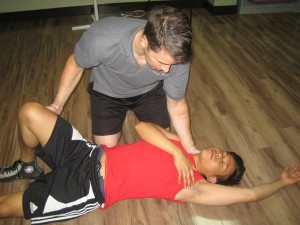When someone gets injured or suddenly falls ill, only very few would actually help. It’s a sad fact that many of us are not willing to help in an accident. Read on and learn why taking a first aid training course can help stop this culture of apathy.
You witnessed an accident and someone gets injured, what would you do? In the ideal world, you would help the victim or call for help. Unfortunately, in reality, only very few would be willing to help. There are a lot of factors that keep people from acting at the scene of accident. However, completing a first aid training course can equip you with knowledge and skills so you can confidently respond in emergencies.
Here are some factors that prevent people from helping in an accident:
1.The presence of other people.
If an accident occurred in public area, bystanders tend to wait for someone to take the lead or assume that someone is already assisting. No one wants to take the burden of responsibility. Others may feel embarrassed to help or are not confident to help while others are watching. If you have completed a first aid training course, do not be ashamed to ask for help. Do not wait for someone to take the first step, decide to act immediately.
2.Being uncertain about the injury or illness of the victim.
If you haven’t completed a first aid training course, you would definitely find a hard time recognizing the nature of injury or illness. Most people hold back because of the fear of catching a disease. While it is true that some people can contract infectious diseases, first aid training teaches participants how to use the universal precautions and the different personal protective equipment (PPE).
3.Fear of committing an error.
The lack of knowledge and skills in first aid can be a significant factor why many would choose not to help in an accident. If you are unsure about how to help, just call emergency services.
4.Fear of being filed with a lawsuit.
Another important factor is the fear of being sued. Take note, however, that Good Samaritan laws are enacted in different states. These laws protect the responder from possible lawsuits provided that you used common sense and a reasonable level of skill, and provided care within your level of skills. Every person is assumed to perform his or her best to save a life and prevent further harm. First aid training course empowers you to perform your best in emergency situations.
5.Not knowing when to call 911.
Always remember that you should call 911 or your local emergency services in

situations where the person’s life is at danger. These situations include absence of airway, breathing, and circulation; loss of consciousness; severe blood loss due to bleeding; severe trauma; chest pain; severe burns; discomfort or feeling of pressure for more than 3-5 minutes; seizure that lasts for more than 5 minutes; possible poisoning; injuries involving the head, neck or back; and possible fractures. First aid training courses would also train you how to call for help.
